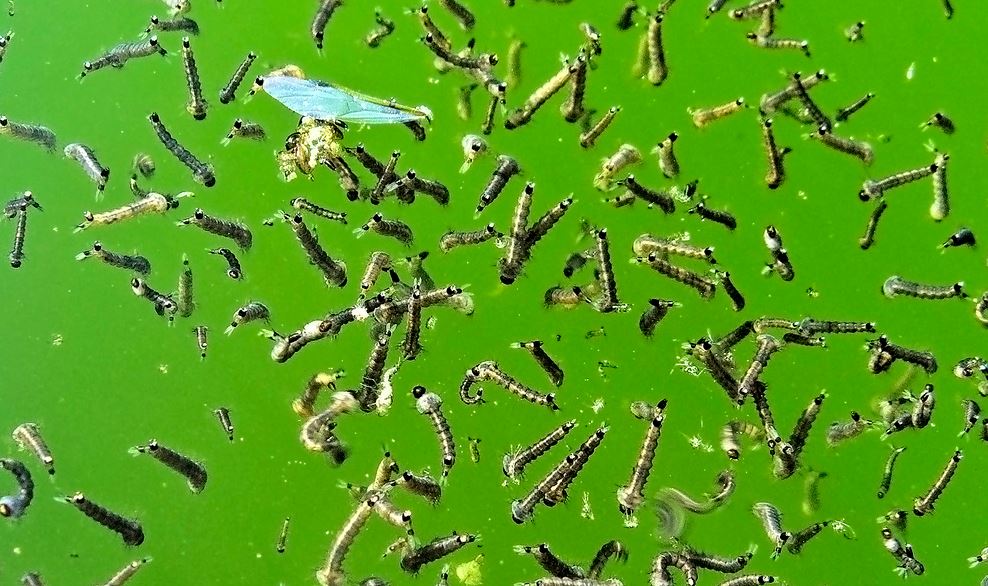Controlling Mosquitoes
Seven steps to mosquito-free living
 Mosquito larvae. Photo: fuentedelateja
Mosquito larvae. Photo: fuentedelatejaMosquitoes can make gardening uncomfortable and turn porch sitting into a chore. But by following these seven simple steps, you can safely reduce mosquito populations, have a more enjoyable summer, and protect yourself from diseases that mosquitoes help spread.
-
Reduce the number of breeding sites on your property.
Female mosquitoes lay their eggs in standing water. The eggs hatch into larvae about three days later, and about 12 days after that, adults emerge and fly away. Considering that each female can lay up to 400 eggs and the life cycle is complete in about two weeks, you can see why mosquito populations can increase so quickly. Reducing the amount of standing water around your home will minimize breeding sites and reduce the number of mosquitoes. Some places to look include clogged rain gutters, tree holes, potholes, old tires, discarded cans and containers and the saucers of your outdoor flower pots. -
Kill mosquito larvae where the insects breed.
If you have standing water you want and enjoy, such as a birdbath, one option is to change the water every week. In water gardens or ponds you can use Mosquito Control Rings which contain a naturally occurring bacterium that kills mosquito larvae for 30 days. -
Remove algae from ponds.
Mosquito larvae feed on algae and other small organisms that live in water. Oxygenating plants, and a Aquasphere Pond Cleaners will help keep ponds and water gardens clear. -
Use a mosquito repellent in your outdoor living space.
While the first three steps will reduce the number of mosquitoes in your yard, they won't eliminate them. That's where safe, natural mosquito repellents come in. Check out the lineup in our Natural Mosquito Repellents category. -
Exclude mosquitoes from your home.
Keeping windows and screens shut to exclude mosquitoes seems straightforward enough, but it can be hard to do. The ingenious Hands-Free Bug Screen helps by automatically shutting behind you as you walk through the door. Light attracts mosquitoes and other insects, so after dark you should also minimize outdoor lighting. -
Increase the number of mosquito predators in your yard.
Bats and swallows love to eat mosquitoes. Install a shelter, like a bat or birdhouse, to help attract predators to your yard. -
Enlist your neighbors to help.
An adult mosquito will fly about two miles from its breeding site (even further if blown by the wind). So get your neighbors on board!
Mosquito Facts
- There are over 2,500 species of mosquitoes in the world and 150 in the U.S.
- Nectar from plants is the primary food for both male and female mosquitoes.
- Female mosquitoes must feed on blood in order to produce fertile eggs. In fact, a female mosquito requires one "blood meal" for every batch of eggs she lays.
- The welts that appear after a mosquito leaves isn't from the bite—it's an allergic reaction to saliva the mosquito injected under the skin to prevent the blood from clotting.
- Most adult mosquitoes live for about two weeks.
- Mosquitoes are attracted to light, warmth, perspiration, body odor and carbon dioxide.
- Mosquitoes can transmit many different diseases including West Nile Virus.
Print this Article:
Get the Dirt
Stay up to date on new articles and advice. Please fill out the information below.
